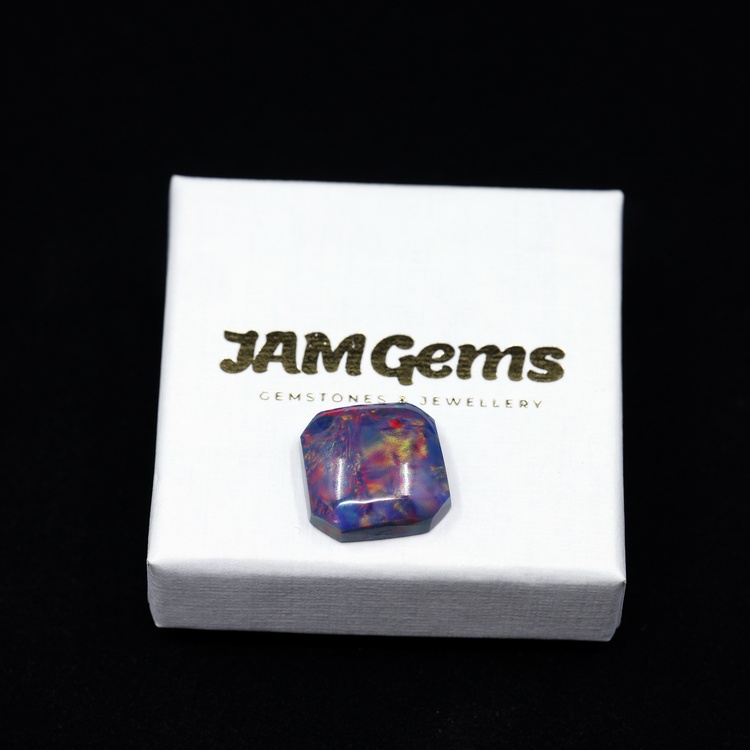-
-
0
My Shopping Bag
0 Items in Your Bag
A brief history of cabochons
The history of cabochons - smooth, polished, non-faceted gemstones - traces back thousands of years, making them one of the oldest gemstone cutting techniques. This style of cutting has been widely used across cultures and civilisations for ornamental and jewellery purposes.
Ancient Origins
The term "cabochon" comes from the French word caboche, meaning "head" or "small dome." The practice of shaping stones into smooth, rounded forms likely began in prehistoric times, when early humans discovered how to polish stones to enhance their natural beauty. Cabochon cutting was common long before the technology for faceting gemstones was developed. Ancient civilisations, such as the Egyptians, Mesopotamians, and Greeks, favoured this technique for stones used in amulets, seals, and jewellery, such as lapis lazuli, carnelian, and turquoise.
Egyptians: The Egyptians were particularly known for their use of cabochon gemstones, especially turquoise, carnelian, and lapis lazuli, which were often set in gold. These gemstones adorned jewellery, masks, and ceremonial objects, with cabochons believed to hold magical and protective powers.
Mesopotamians: In Mesopotamia, agate and other gemstones were crafted into cabochons and used for cylinder seals, which had both practical and symbolic purposes.
Medieval and Renaissance Periods
During the Middle Ages and Renaissance, cabochon-cut gemstones continued to be widely used in religious artefacts, crowns, and jewellery. Gemstones like amethyst, garnet, amber, and ruby were polished into cabochons to display their colour and lustre, and they were often set in gold or silver for use in reliquaries, rings, and brooches.
This period also saw an increasing emphasis on heraldic jewellery, where cabochons were used in family crests and seals, serving both as symbols of nobility and protective talismans.
Victorian Era
In the 19th century, particularly during the Victorian era, cabochon gemstones regained popularity in jewellery. The soft, romantic appeal of the cabochon cut complemented the intricate and ornate designs of the period. Opals, moonstones, and turquoise were among the most popular stones to be cut as cabochons and were often used in brooches, rings, and pendants.
The cabochon cut was also favoured for opaque and translucent stones that do not lend themselves well to faceting, such as malachite, onyx, and jade.
20th Century to Present
With the advent of modern gem-cutting techniques in the 20th century, faceted stones became more dominant in the jewellery market. However, cabochons have remained a staple in certain styles, especially Art Nouveau and Art Deco jewellery, which appreciated the organic shapes and smooth contours of the cabochon cut.
Today, cabochons are often used in bohemian, artisan, and vintage-inspired jewellery, as well as in pieces that showcase the natural qualities of gemstones that might not display well with faceting. For example, opal, turquoise, moonstone, and jade are still commonly cut into cabochons, as their unique internal features (like opal£s play-of-colour) are better highlighted through this technique.
Spiritual and Metaphysical Uses
Throughout history, cabochons have also been used in spiritual and metaphysical contexts. Many believe that the smooth, uncut surfaces of cabochon stones allow their healing energy to flow more freely. Cabochons are popular in crystal healing, chakra balancing, and meditation, as their polished surfaces are thought to promote relaxation and balance.
Conclusion
The cabochon cut remains a timeless gemstone-cutting style, with a rich history that spans from ancient civilisations to modern-day jewellery design. Its enduring popularity lies in its ability to showcase the natural beauty, colour, and inclusions of gemstones, as well as its versatile appeal in various cultural and artistic settings. Whether found in ancient amulets or contemporary bohemian rings, cabochons continue to captivate with their soft, elegant allure.
- Saturday, October 12, 2024
- General Blog
- Jason

